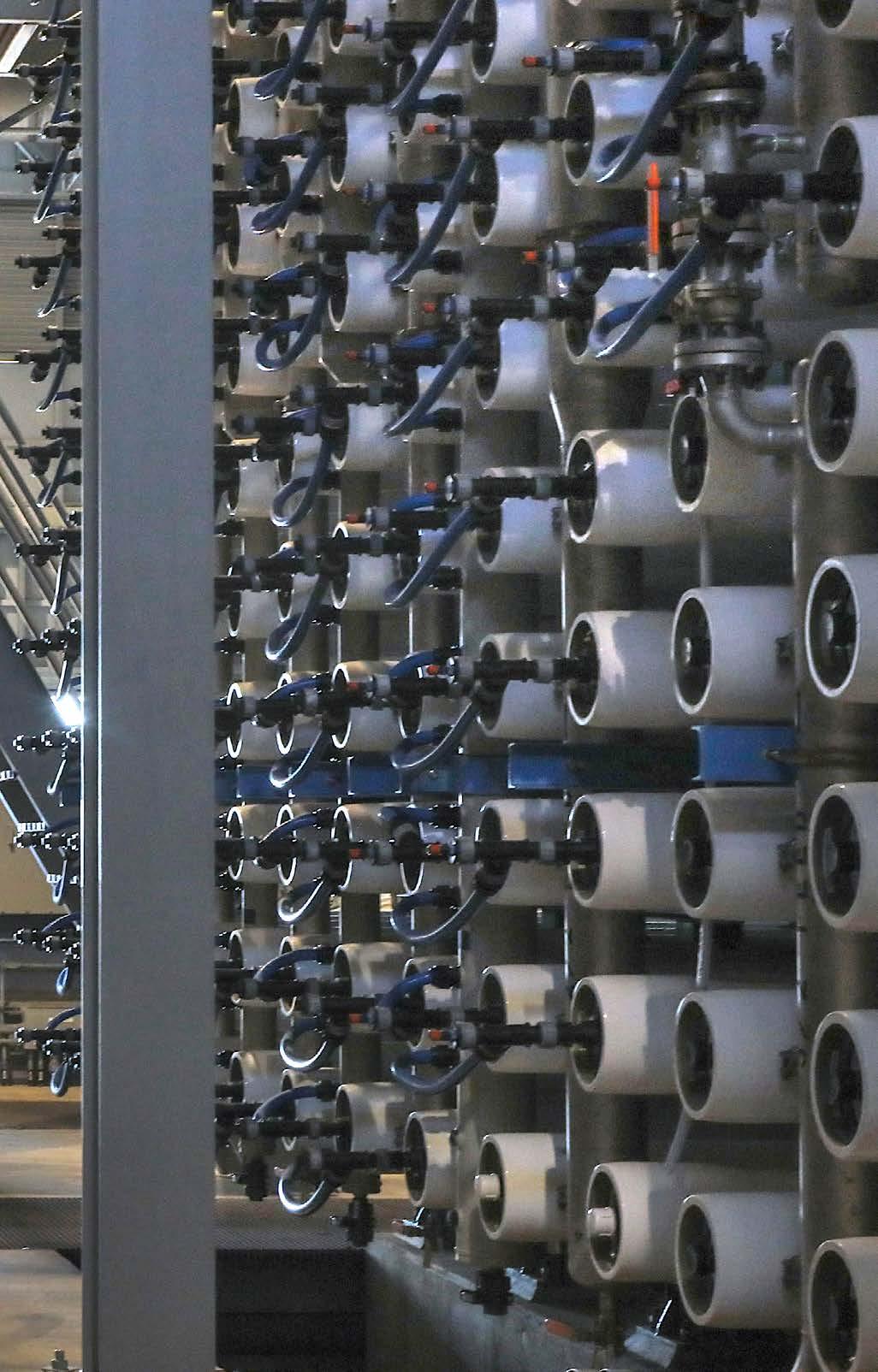
4 minute read
INSIGHT EXECUTIVE
THERE TODAY, GONE TOMORROW? UNDERSCORING THE NEED FOR DESALINATION BEFORE WATER SCARCITY EVENTS
By Ms. Jessica H. Jones
Poseidon Water and the San Diego County Water Authority celebrated the start of operations at the United States’ largest, most technologically advanced and energy efficient seawater desalination plant in December 2015. That the opening of the Claude “Bud” Lewis Carlsbad Desalination Plant in San Diego County, California, occurred in the middle of one of the worst droughts in state history was entirely coincidental. However, the timing inspired a great deal of attention from elected leaders and the media – a new, drought-proof water supply in the middle of a statewide drought, it was almost too good to be true. It’s easy to help people understand the need for desalination facilities during a drought, but that’s too late to realize that the facilities are needed. With the changing global climate and shifting water patterns, municipalities must be forwardthinking and cognizant of their water portfolio management strategy and how to effectively prepare for future water scarcity conditions. The current tragedy in Australia exhibited by the loss of life and the destruction of natural habitats and valuable resources is a painful reminder of the need to anticipate climate change-induced natural disasters. In response, Australia is now moving to expand its already substantial desalination capabilities quickly, so that next time tragedy strikes, they are prepared. Australia’s experiences should be a lesson to all of us about the importance of shoring up drought-proof water supplies long before these supplies become critically needed. What it comes down to is this – seawater desalination provides a local or regional water supply that is independent of rainfall or snowpack and therefore is the only 100% climate resilient and new water supply available to many municipalities today. Desalination is also a proven solution to the persistent problem of drought and climate change. There is no better example of how desalination helps to combat drought conditions than the Carlsbad Desalination Plant in San Diego County. Semiarid San Diego County has very limited local water resources and the Carlsbad Desalination Plant has aided San Diego County Water Authority’s long-term strategy to enhance reliability and diversify the region’s water supply. The 50 million gallon-per-day reverse osmosis seawater desalination plant provides San Diego County with about 10% of its full water supply – enough to serve around 400,000 residents. The plant is the County’s largest single local water source – accounting for 38 percent of all Desalination is San Diego’s only local drinking water source not dependent on snowpack or rainfall
local water. Desalination is San Diego’s only local drinking water source not dependent on snowpack or rainfall, making it a crucial part of the region’s efforts to diversify and increase local supplies. The Carlsbad Desalination Plant has provided significant benefits to the San Diego region since it came online. Perhaps the most direct benefit was that, during the mandatory drought restrictions in 2015, the State Water Resources Control Board designated the Carlsbad desalination plant a climate resilient water supply, a historic regulatory designation that afforded San Diego County relief from mandatory water restrictions. This is a tangible outcome that was only possible because local leaders had the foresight and vision to pursue desalination more than a decade prior to the onset of drought conditions. To date, the Carlsbad Desalination Plant has produced nearly 60 billion gallons of highquality, climate-resilient drinking water. Given its success, it’s no surprise that the Carlsbad plant has become a model that elected leaders hope to emulate elsewhere. In California alone, there are already efforts underway to develop several more desalination facilities, including a sister facility to the Carlsbad plant planned in Huntington Beach, California, which is in the final stages of permitting before it can begin providing Orange County residents with their own drought-proof, reliable water supply. If the Carlsbad plant is any indication, it takes about two decades to permit and construct a large-scale seawater desalination plant, and about two hours to produce high-quality drinking water at the plant once it’s complete. Unfortunately, the latter isn’t possible unless you’ve completed the former. That’s why it’s critical that municipalities that may need desalinated water in the future start planning and permitting right now. Climate change has the potential to up-end our way of life, and coupled with projected population growth, whole communities could be at risk if access to water becomes scarce. Working collaboratively across regions, industries and the public and private sectors, we have the power to prevent future catastrophes if we start now. If we wait until the next drought is upon us, it could be too late.
About the Author
Ms. Jessica Jones i s t h e D i r e c t o r o f Communications at Poseidon Water LLC. She has been leading the outreach, community education and other development activities for the Carlsbad and Huntington Beach Desalination Plants since 2000. Jessica is on the Board of the Carlsbad Chamber of Commerce, a member of the Carlsbad Hi-Noon Rotary, SD League of Women’s Voters and CalDesal. Jessica received her business degree from Babson College in Wellesley, Massachusetts and currently resides in Carlsbad, California with her family











